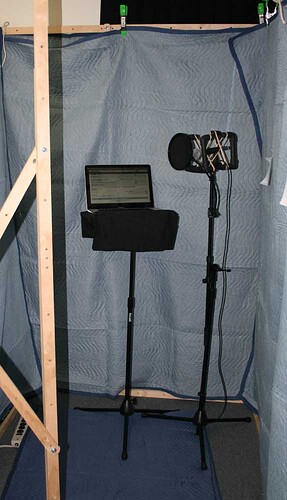Any tips on optimal use of noise removal and when not to use it?
“No,” and “Never.”
There’s a standing line that by the time you realize you need noise removal, it’s too late.
Noise Removal is a patch job that in certain very limited circumstances can slightly improve the quality of a performance. There is a long list of rules for use and the thing people want most – improving a voice – almost never works right.
The two sentence version of Noise Removal:
Select a portion of noise by itself and use that as the profile. Run the tool a second time and subtract the profile sound from the show.
What could be simpler? The problem comes when you try to remove hiss (for only one example). The tool also tries to remove the hiss sounds from your voice (Sister Suzy Sells…), so provision is made to “go around” voices when applying the tool. This is what “Frequency Smoothing” and other settings do. This gives you hissy snake voices in a velvety-silent show.
The list of problems like that is long. You are urged very strongly to produce a show that does not need noise removal at all. Make sure the volume of the voice is high enough so you don’t have microphone hiss problems. Throw pillows and quilts around so you don’t have room echo and dog barking problems, etc. Separate yourself from the computer fan noise.
As a side issue, we can’t easily change the character of a speaking voice. It’s a Frequently Asked Question. It’s painfully difficult to remove “mouth clicks” and other physical speaking problems (a recent post). If you have a noisy swallow, then learn to turn away from the microphone when you do it. Announcers have been doing this for years. In broadcast facilities, there might be a “cough button” which temporarily disables the microphone.
We wrote a piece on Noise Removal.
http://manual.audacityteam.org/o/man/noise_removal.html
And if I wasn’t Debbie Downer enough, even if you do figure out a way to patch yourself into a successful podcast or performance, remember you’ll have to do it the same way each and every time. This puts you in Post Production category where producing the show can take up to three times the length of the show.
One other Post Production comment made by an audio type friend of mine. “You’ll hear a lot more trash in your headphones than will ever appear in the show.” I’m hoping you’ll have a background music or natural theatrical sound in your pieces. Those go a terrifically long way to hiding live recording problems. If your voice is going to appear completely by itself, then you need to record in a studio or a room you can make into a studio.
Koz
![]()
